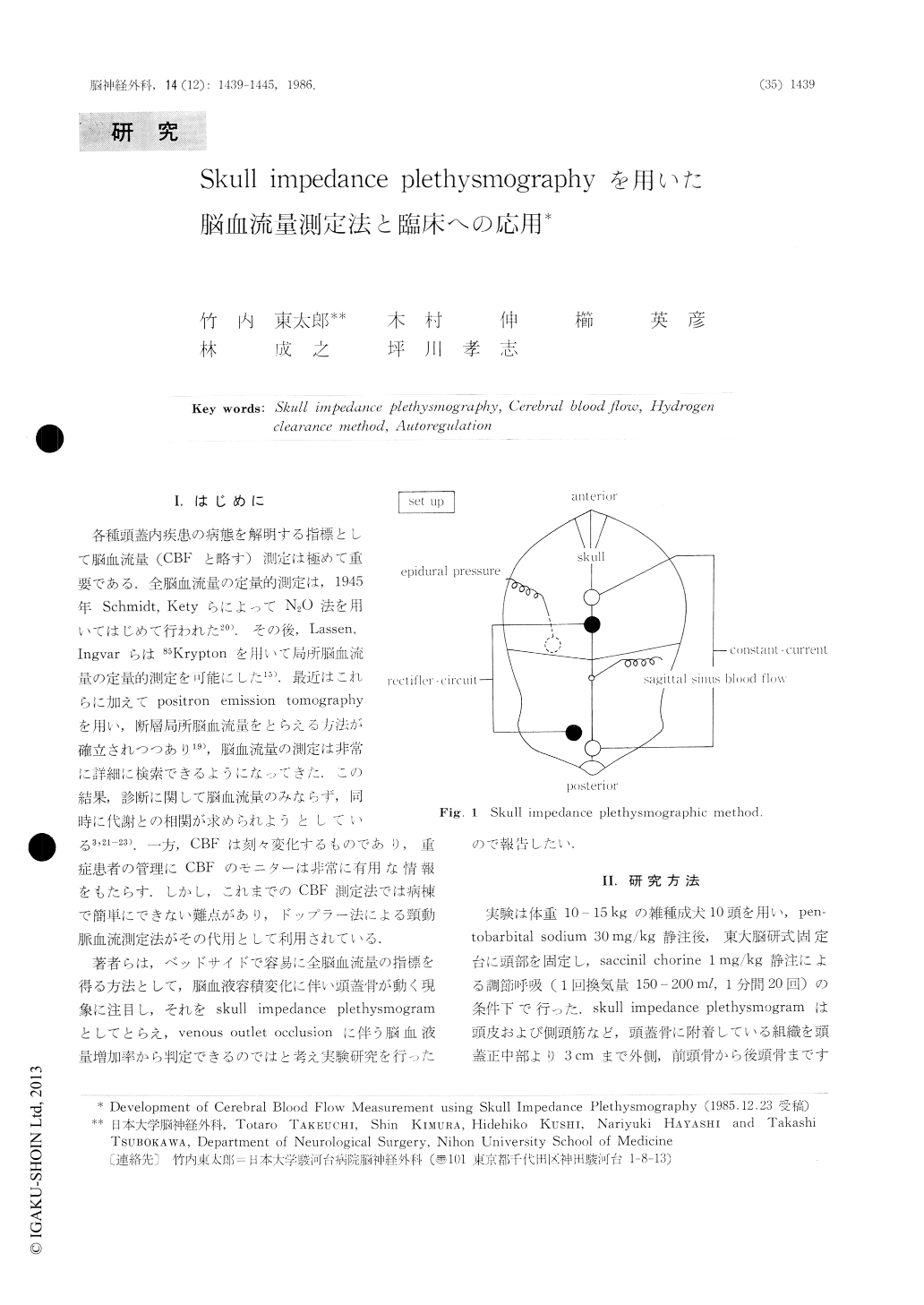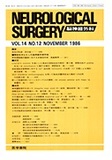Japanese
English
- 有料閲覧
- Abstract 文献概要
- 1ページ目 Look Inside
I.はじめに
各種頭蓋内疾患の病態を解明する指標として脳血流最(CBFと略す)測定は極めて重要である.全脳血流量の定量的測定は,1945年Schmidt, KetyらによってN2O法を用いてはじめて行われた20).その後,Lassen,Ingvarらは85Kryptonを用いて局所脳血流量の定量的測定を可能にした15).最近はこれらに加えてpositron emission tomographyを用い,断層局所脳血流量をとらえる方法が確立されつつあり19),脳血流量の測定は非常に詳細に検索できるようになりてきた.この結果,診断に関して脳血流量のみならず,同時に代謝との相関が求められようとしている3,21-23),一方,CBFは刻々変化するものであり,重症患者の管理にCBFのモニターは非常に有用な情報をもたらす.しかし,これまでのCBF測定法では病棟で簡単にできない難点があり,ドップラー法による頸動脈血流測定法がその代用として利用されている.
著者らは,ベッドサイドで容易に全脳血流量の指標を得る方法として,脳血液容積変化に伴い頭蓋骨が動く現象に注目し,それをskull impedance plethysmogramとしてとらえ,venous outlet occlusionに伴う脳血液量増加率から判定できるのではと考え実験研究を行ったので報告したい.
Using skull impedance plethysmography, a deve-lopmental approach was made to the measurement of mean cerebral blood flow (mCBF) from brain volume exchanging ratio (ΔV) involved in bilateral jugular venous occlusion. An experimental study thereof revealed the following results:
Comparative examinations were made between total cerebral blood flow obtained by the superior sagittal sinus hydrogen clearance method and ΔV・t obtained by the present approach led to the establishment of a linear correlation therebetween and also of the following calculating formula: mCBF=k×ΔV・t (Ω・sec) k: proportional coefficient

Copyright © 1986, Igaku-Shoin Ltd. All rights reserved.


